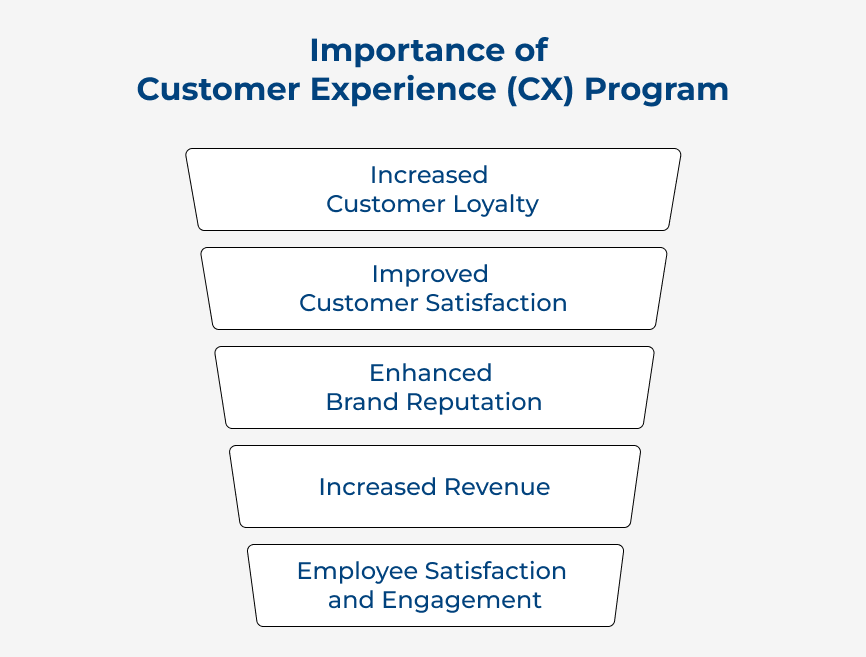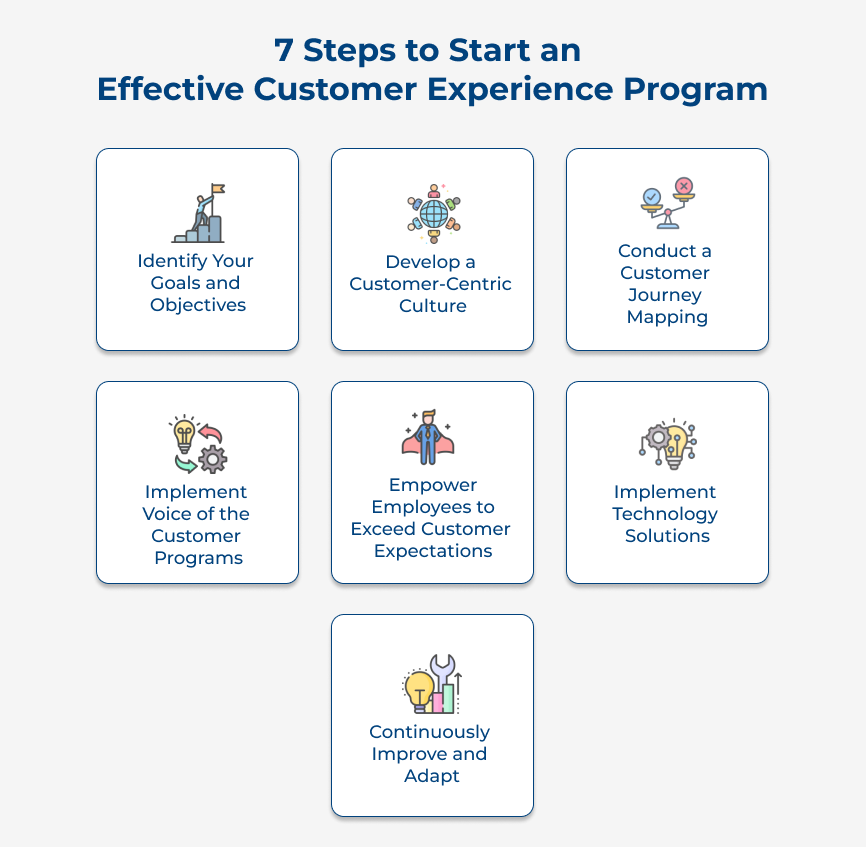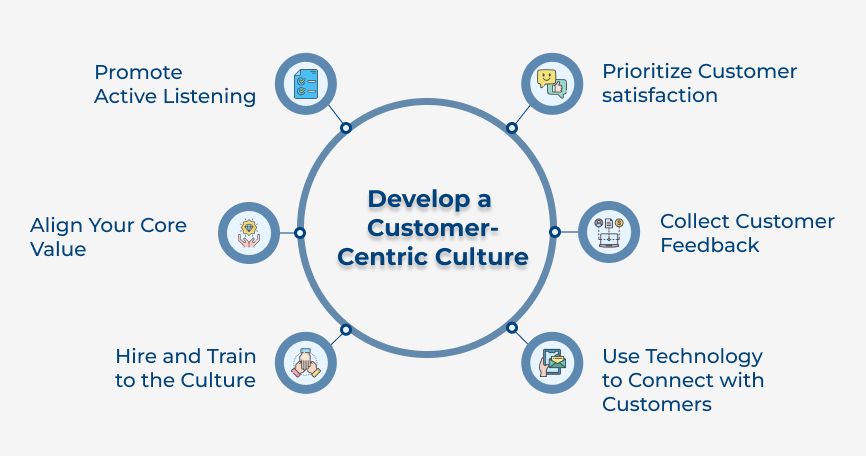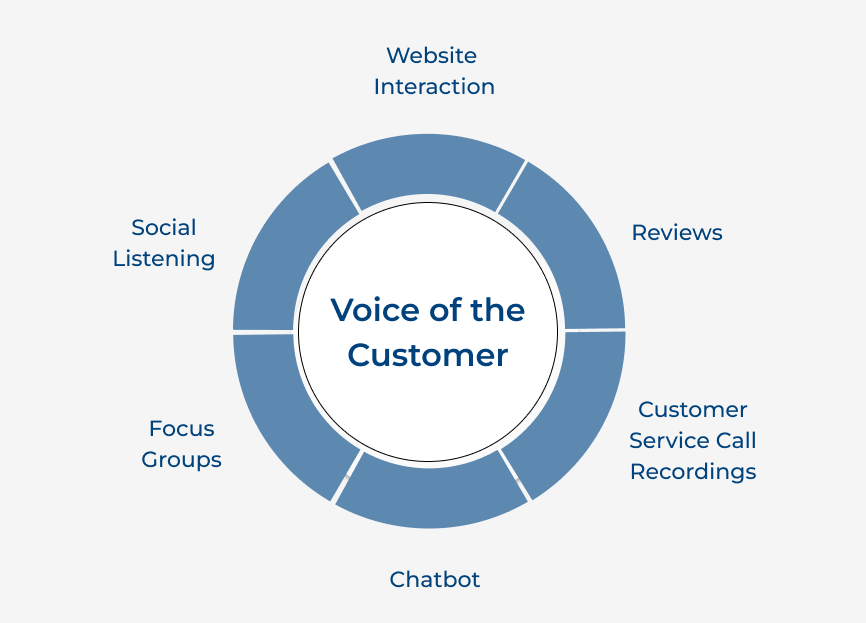VoC helps businesses understand their customers’ needs and expectations, enabling them to tailor their products or services accordingly. They can identify any pain points or issues that may be hindering customer satisfaction. Customer feedback gives businesses insights that can drive innovation and improve their offerings.
Pro tips:
- Choose the right feedback channels: Select channels that the target audience is most likely to use and engage with.
- Ask the right questions: Use open-ended questions that are clear, easy to understand, and address specific aspects of the customer experience.
- Actively listen and respond: Demonstrate that you value customer feedback by promptly responding to their concerns or suggestions.
Step 5. Empower Employees to Exceed Customer Expectations
When the team members are motivated to provide exceptional service, it creates a positive customer experience that can lead to increased loyalty and revenue. A culture of customer-centricity is facilitated within the company where everyone understands the importance of putting the customer first.
When employees experience being empowered, they feel a sense of ownership and responsibility toward their work. The result is an improved performance. It enables employees to handle challenging situations with more confidence and creativity, finding innovative solutions to exceed customer expectations.
Pro tip:
- Provide training and development: Invest in continuous development programs that enhance employees skills, knowledge and understanding of customer needs.
- Facilitate a positive work environment: Create a work environment that encourages collaboration, open communication and teamwork. When employees feel supported and valued, they are more likely to walk the extra mile for customers.
- Delegate authority: Give employees the authority to make decisions and resolve customer issues without seeking constant approval.
Step 6. Implement Technology Solutions
Implementing technology solutions helps businesses analyze data about their customers, allowing them to gain valuable insights and better understand their preferences. The data-driven approach helps tailor products and services to meet customer expectations, eventually leading to higher customer satisfaction.
Technology solutions provide automation and efficiency in managing customer interactions. Customer relationship management (CRM) systems and chatbots allow businesses to provide quick and personalized responses to customer inquiries. It not only saves time and reduces costs but also enhances the overall customer experience by ensuring timely service.
Pro tips:
- Choose the right technology: Conduct thorough research to select technology that aligns with the business needs, considering factors like scalability, ease of use and integration capabilities.
- Continuously collect and analyze customer data: Regularly analyze customer data to identify trends, preferences and pain points. Use the information to make informed decisions and improve your program.
- Regularly update and optimize: Technology is ever-evolving, so ensure the solutions are up to date and continuously optimize them to stay ahead of the competition.
Step 7. Continuously Improve and Adapt
Regularly analyzing customer feedback allows us to identify areas that need improvement and implement necessary changes. The approach not only helps to meet customer expectations but also keeps you ahead of the competition.
Being adaptable is crucial in the ever-changing dynamics of the market. Customer preferences, needs and expectations can change rapidly, so it is important to remain flexible. Businesses can ensure their CX program remains relevant by staying nimble and making necessary adaptations.
Pro tips:
- Keep an eye on industry trends: Stay informed and be proactive in adjusting the strategies to align with evolving customer needs.
- Promote a culture of innovation: Encourage the employees to generate ideas and solutions to enhance the customer experience.
- Monitor and measure(KPIs): Use metrics to track the progress and identify areas that require attention.
How to Measure the Success of the Customer Experience Program?
Check out the essential metrics you should consider to measure the success of your customer experience program, ensuring you stay on a path to continuous improvement.
1. Net Promoter Score (NPS)
NPS is a widely used metric that measures customer loyalty and satisfaction. It asks customers a simple question: “On a scale of 0 to 10, how likely are you to recommend us to others?” Based on their response, customers are categorized as promoters (9-10), passives (7-8), or detractors (0-6).

















